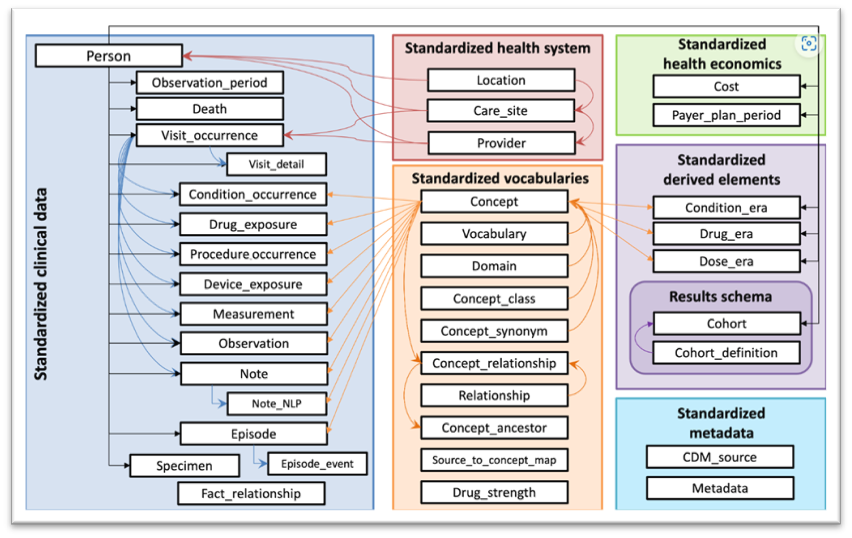Overview of OMOP transformations in healthcare data solutions
The objective of implementing any common data model is to establish standardization and streamline the structuring, storage, sharing, exchange, and usage of data. In healthcare data solutions, you can use OMOP transformations to deploy the Observational Medical Outcomes Partnership (OMOP) common data model (CDM) in the Fabric lakehouse environment. This deployment provides researchers within the OMOP community access to OneLake's expansive scale and the AI capabilities of the Fabric platform. The setup enables efficient and reliable execution of standardized analytics for patient and population-level observational studies.
By deploying the OMOP CDM to Fabric using prebuilt pipelines, you can use the provided notebooks to construct statistical models, conduct population distribution studies, and utilize Power BI reports to visually compare various interventions and their effects on patient outcomes. These analytical capabilities enable researchers to perform comparative analyses, such as evaluating procedures and drug exposures or examining correlations between drug exposures and condition occurrences. For reference and guidance, the capability also provides sample notebooks for these scenarios.
OMOP transformations is an optional capability under healthcare data solutions in Microsoft Fabric. You have the flexibility to decide whether or not to use it, depending on your specific needs or scenarios.
To learn how to deploy, configure, and use the OMOP transformations capability, see:
- Deploy and configure OMOP transformations
- Use OMOP transformations
- Use the OMOP transformations sample notebooks
After transforming your data into the OMOP model, you can also query and analyze the data using the Discover and build cohorts (preview) capability in healthcare data solutions.
What's included in OMOP CDM
Healthcare data solutions in Microsoft Fabric implement the OMOP Common Data Model version v5.4 with focus on mapping Fast Healthcare Interoperability Resources (FHIR) clinical resources to corresponding OMOP tables in Fabric. The complete OMOP CDM schema with all its tables is populated in the healthcare#_msft_gold_omop lakehouse. However, only the clinical tables are mapped to FHIR resources.
The tables under Standardized health economics are out of scope and aren't mapped to any FHIR resources. They won't be populated after the transformation pipelines are executed from the healthcare#_msft_silver lakehouse to the healthcare#_msft_gold_omop lakehouse.
We include Standardized vocabularies to map terminologies and codes from FHIR clinical resources to corresponding OMOP standard concepts in the clinical domain.
The Athena Data Set contains references to domain specific vocabularies.
Standard vocabularies included in the current release are SNOMED-CT (Systematized Nomenclature of Medicine - Clinical Terms), LOINC (Logical Observation Identifiers, Names, and Codes), and RxNorm.
